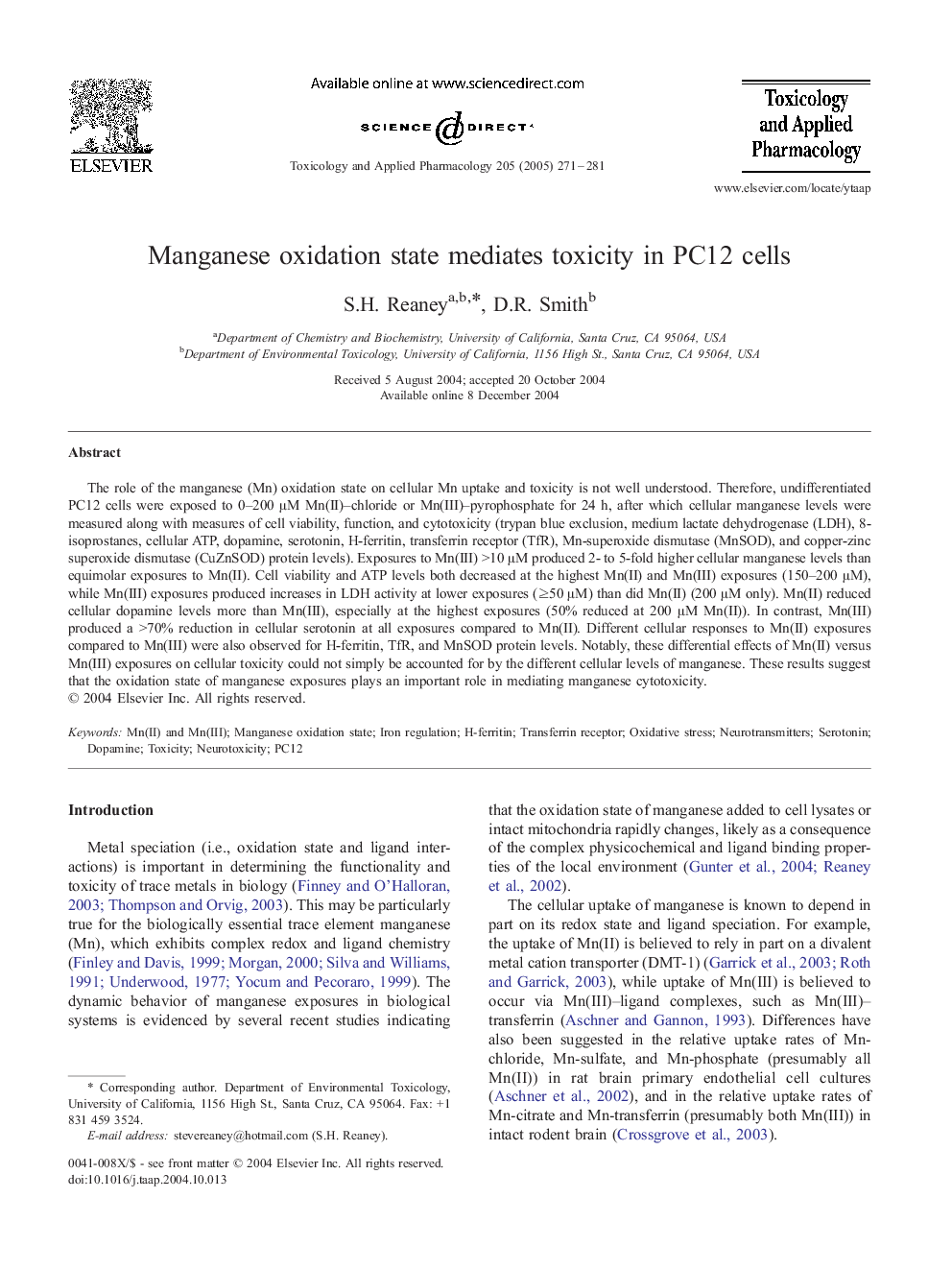| Article ID | Journal | Published Year | Pages | File Type |
|---|---|---|---|---|
| 9018012 | Toxicology and Applied Pharmacology | 2005 | 11 Pages |
Abstract
The role of the manganese (Mn) oxidation state on cellular Mn uptake and toxicity is not well understood. Therefore, undifferentiated PC12 cells were exposed to 0-200 μM Mn(II)-chloride or Mn(III)-pyrophosphate for 24 h, after which cellular manganese levels were measured along with measures of cell viability, function, and cytotoxicity (trypan blue exclusion, medium lactate dehydrogenase (LDH), 8-isoprostanes, cellular ATP, dopamine, serotonin, H-ferritin, transferrin receptor (TfR), Mn-superoxide dismutase (MnSOD), and copper-zinc superoxide dismutase (CuZnSOD) protein levels). Exposures to Mn(III) >10 μM produced 2- to 5-fold higher cellular manganese levels than equimolar exposures to Mn(II). Cell viability and ATP levels both decreased at the highest Mn(II) and Mn(III) exposures (150-200 μM), while Mn(III) exposures produced increases in LDH activity at lower exposures (â¥50 μM) than did Mn(II) (200 μM only). Mn(II) reduced cellular dopamine levels more than Mn(III), especially at the highest exposures (50% reduced at 200 μM Mn(II)). In contrast, Mn(III) produced a >70% reduction in cellular serotonin at all exposures compared to Mn(II). Different cellular responses to Mn(II) exposures compared to Mn(III) were also observed for H-ferritin, TfR, and MnSOD protein levels. Notably, these differential effects of Mn(II) versus Mn(III) exposures on cellular toxicity could not simply be accounted for by the different cellular levels of manganese. These results suggest that the oxidation state of manganese exposures plays an important role in mediating manganese cytotoxicity.
Keywords
Related Topics
Life Sciences
Environmental Science
Health, Toxicology and Mutagenesis
Authors
S.H. Reaney, D.R. Smith,
